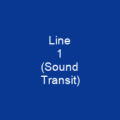SEPTA: The Backbone of Philadelphia’s Public Transportation
Imagine a bustling city where millions of people rely on a single transportation authority to navigate their daily lives—this is the reality for nearly four million people in five counties around Philadelphia, Pennsylvania. Who could manage such an extensive network? The Southeastern Pennsylvania Transportation Authority (SEPTA) does just that.
A Brief History
Created in 1963 to coordinate government funding for various transit companies, SEPTA has grown into a behemoth of public transportation. 
Service Expansion and Challenges
SEPTA has proposed restoring service to various cities but faced doubts about ridership projections. Many derelict lines were converted into rail trails, delaying restoration proposals. Is there a way to balance expansion with sustainability? The agency’s governance structure often faces criticism for lacking transparency and a system-wide expansion program.
Financials and Governance
SEPTA is a non-profit organization that receives income from passenger fares, investments, and government agencies to cover operating costs. In 2021, SEPTA had $1,530,984,000 in total operating expenses, with labor and fringe benefits accounting for 71.1% of those expenses. How can SEPTA ensure it remains financially sustainable?
Passenger Services
Rides on SEPTA’s transit services cost $2.50, with various types of passes available only on a SEPTA Key card. The agency offers several payment methods for its transit services and Regional Rail, including SEPTA Key cards, Quick Trips (single ride magnetic strip cards), Key Tix (electronic tickets bought through mobile apps), NFC payments (contactless credit cards and digital wallets), and more.
Infrastructure and Fleet
The SEPTA subway cars are built by Kawasaki for the Broad Street Line and Adtranz for the Market-Frankford Line. These cars use a broad gauge of 5 ft 2+1⁄4 in (1,581 mm), known as ‘Pennsylvania trolley gauge.’ In 2017 and 2020, all 112 Kawasaki-built vehicles had to have emergency welding and permanent welding to fix cracking steel beams. How can SEPTA ensure its infrastructure remains robust?
The Future of SEPTA
SEPTA is ordering new low floor streetcars built by Alstom, scheduled to enter service between 2027-2030. The agency ordered 220 new New Flyer XDE40 buses in 2021. These initiatives aim to modernize SEPTA’s fleet and infrastructure, ensuring it remains a vital part of Philadelphia’s transportation landscape.
Conclusion
SEPTA has come a long way since its creation in 1963. From its initial challenges to its current initiatives, the agency continues to evolve and adapt to meet the needs of its riders. As SEPTA looks towards the future, it must balance expansion with sustainability, ensuring that it remains a reliable and efficient transportation authority for millions of people.
You want to know more about SEPTA?
This page is based on the article SEPTA published in Wikipedia (retrieved on January 14, 2025) and was automatically summarized using artificial intelligence.







